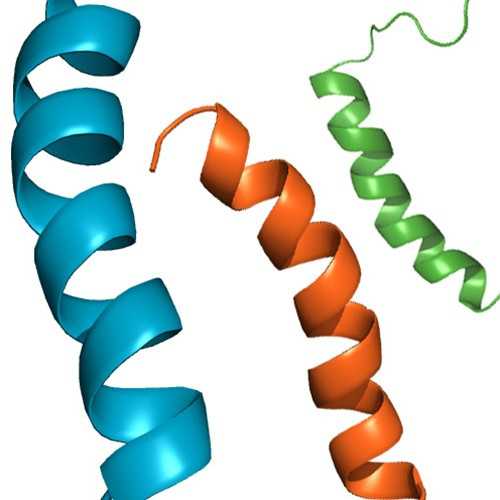Stable Receptor Related Protein (RAP) LRP1 Inhibitor
Stable Receptor Related Protein (RAP) low density lipoprotein receptor-related protein 1 (LRP1) Inhibitor was made by mutating Y260 (in helix 2) and T297 (in helix 3) to cysteines that form a disulfide bond, and four histidine residues (H257, H259, H268, and H290) to phenylalanines.
Highlights:
- Contains the following mutations: Y260C, T297C, H257F, H259F, H268F, and H290F
- Purified over reverse phase HPLC to remove endotoxin
Stable Receptor-Associated Protein (RAP) is an antagonist of lipoprotein receptor-related protein 1 (LRP1). When RAP is administered IV post-stroke, it results in significant regaining of motor activity and a reduction in BBB leakage. RAP may also hold therapeutic promise in management of risk of bleeding in hemophiliac patients. The molecule binds to lipoprotein receptor-related protein 1 (LRP1) with high affinity and inhibits LRP1 function both in vitro and in vivo, suggesting that the novel RAP may be a useful tool in understanding lipoprotein metabolism, cell signaling, modulation of blood brain barrier integrity, and blood coagulation and fibrinolysis.
From the laboratory of Dudley K. Strickland, PhD, University of Maryland, Baltimore.
Stable Receptor Related Protein (RAP) low density lipoprotein receptor-related protein 1 (LRP1) Inhibitor was made by mutating Y260 (in helix 2) and T297 (in helix 3) to cysteines that form a disulfide bond, and four histidine residues (H257, H259, H268, and H290) to phenylalanines.
Highlights:
- Contains the following mutations: Y260C, T297C, H257F, H259F, H268F, and H290F
- Purified over reverse phase HPLC to remove endotoxin
Stable Receptor-Associated Protein (RAP) is an antagonist of lipoprotein receptor-related protein 1 (LRP1). When RAP is administered IV post-stroke, it results in significant regaining of motor activity and a reduction in BBB leakage. RAP may also hold therapeutic promise in management of risk of bleeding in hemophiliac patients. The molecule binds to lipoprotein receptor-related protein 1 (LRP1) with high affinity and inhibits LRP1 function both in vitro and in vivo, suggesting that the novel RAP may be a useful tool in understanding lipoprotein metabolism, cell signaling, modulation of blood brain barrier integrity, and blood coagulation and fibrinolysis.
From the laboratory of Dudley K. Strickland, PhD, University of Maryland, Baltimore.
| Product Type: | Small Molecule |
| Molecular Weight: | 38 kDa |
| Purity: | Protein was also purified over reverse phase HPLC to remove endotoxin |
| Buffer: | HBS |
| Tested Applications: | 500nM for blocking LRP ligands in cells |
| Concentration: | 165uM |
| Storage: | -80C |
| Shipped: | Dry ice |
- Prasad JM, Migliorini M, Galisteo R, Strickland DK. Generation of a Potent Low Density Lipoprotein Receptor-related Protein 1 (LRP1) Antagonist by Engineering a Stable Form of the Receptor-associated Protein (RAP) D3 Domain. J Biol Chem. 2015 Jul 10;290(28):17262-8.
If you publish research with this product, please let us know so we can cite your paper.


